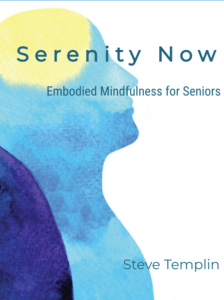I’ll bet that most everyone reading this is aware of multiple personality disorder. We’ve seen it portrayed on television and in movies as an attribute belonging to a highly disturbed character.
Well, a number of psychological schools of thought propose that we’re all composed of multiple parts or subpersonalities, regardless of the terminology they use to describe the phenomenon. The system that I’m most familiar with is Internal Family Systems developed by Richard Schwartz, Ph.D.
From the multiple parts point of view, having these parts is not seen as a pathological condition, where there’s an obvious lack of integration of the parts and personality, but rather as a normal configuration of the psyche. Our language reflects this inner structure when we say, “a part of me is angry at Betty and just doesn’t want to go to her birthday party, while another part would love to make up and have a good time”.
These parts are often revealed as uncomfortable feelings or judgmental attitudes that are triggered by events or people in our lives. The parts and their accompanying feelings and attitudes are often the focus of our attempts to transform ourselves.
The significance of this perspective for me is that when we consciously make room for feelings or attitudes, rather than ignore, reject, or judge them, we’re welcoming parts of ourselves that have previously felt dismissed or abandoned. As these parts (of our internal family) begin to feel more heard and accepted they’re more likely to soften or relax. As these parts are less inclined to react or intrude, we’re freer to be the person we want to be.
The parts of us (feelings and attitudes) that we most resist are frequent opportunities for healing and wholeness if we can only open our awareness and hearts to them.
Your Biology to the Rescue
If our intention is to shift a challenging feeling or attitude (or befriend a part of ourselves) it’s really difficult to be successful if you’re trying to make that change while still immersed in the disturbing feeling. It helps to create some space for ourselves or some distance in order to perceive more clearly.
You can shift your biology, specifically your autonomic nervous system (ANS), directly so that your brain is now operating in a more orderly and resilient fashion. From this new, more whole brain (versus diminished, stress-out brain) perspective you’ll be more likely to let go of what’s not needed and be open to what’s needed to support your intention to change.
This neurological shift ushers in more orderly brainwaves, more balanced left, and right brain hemisphere communication, more prefrontal (conscious brain) activity, and less limbic (old emotional programming) activity. From this more intact neurological vantage point we’re more inclined to see new, more creative solutions to our challenges.
The suggestion here is to shift to a more resilient neurological space first, rather than struggling with a smaller, less capable brain and nervous system.
Connecting with Your Body
The most direct path I’m aware of for shifting our neurological potential is through the body. Connecting directly with feelings, or sensations, or the experience of noticing bodily felt spaces is a trusted path to reset the nervous system. On the other hand, trying to shift gears by thinking alone (and thinking more) is pretty much a guaranteed route to more distress.
Rather than talk more about shifting gears neurologically, let’s just do it through an exercise … that can be done briefly … and still be a powerful practice … and easily repeatable throughout the day.
Here are the steps:
- Notice that something or someone has triggered you and pause.
- Notice how you’re feeling …. annoyed, sad, confused, etc.
- Notice where in your body you’re feeling that the most.
- Be open to the notion that your upset feelings may be related to a part or parts of you …. that don’t want to be judged or ignored …. again …. but rather desire to be seen, heard, or acknowledged.
- You can say or think something akin to ‘I see you, I hear you and I know that you’re upset over what happened’.
- Now, take a s-l-o-w breath or two into the middle of your chest. If it helps you to focus on your heart you can place a hand on your heart.
- While you’re continuing to breathe slowly bring to mind something that pleases you and just appreciate the experience. For example, you could think of your best friend (human or animal), your favorite place in nature, the smell and warmth of your morning coffee (or gogi juice), anything can work but just keep it simple.
This whole process is done briefly …. it’s not a prolonged meditation. The steps are done rather quickly. I just timed myself twice and I was finished in under 45 seconds. Keep it simple and brief. Over time the repetition of the process will help to etch in new neural circuits that will help you to catch when you’re triggered and to recover more quickly.
This is about helping ourselves be more of who we want to be by focusing more on and trusting our biology than our mind.
Pause and practice. Enjoy coming home to your Self.


 Steve is a retired Doctor of Oriental Medicine, Acupuncture Physician, and HeartMath Trauma-Sensitive Certified Practitioner with over 35 years of clinical experience in the fields of Energy Medicine, Energy Psychology, and Biofeedback.
Steve is a retired Doctor of Oriental Medicine, Acupuncture Physician, and HeartMath Trauma-Sensitive Certified Practitioner with over 35 years of clinical experience in the fields of Energy Medicine, Energy Psychology, and Biofeedback. 